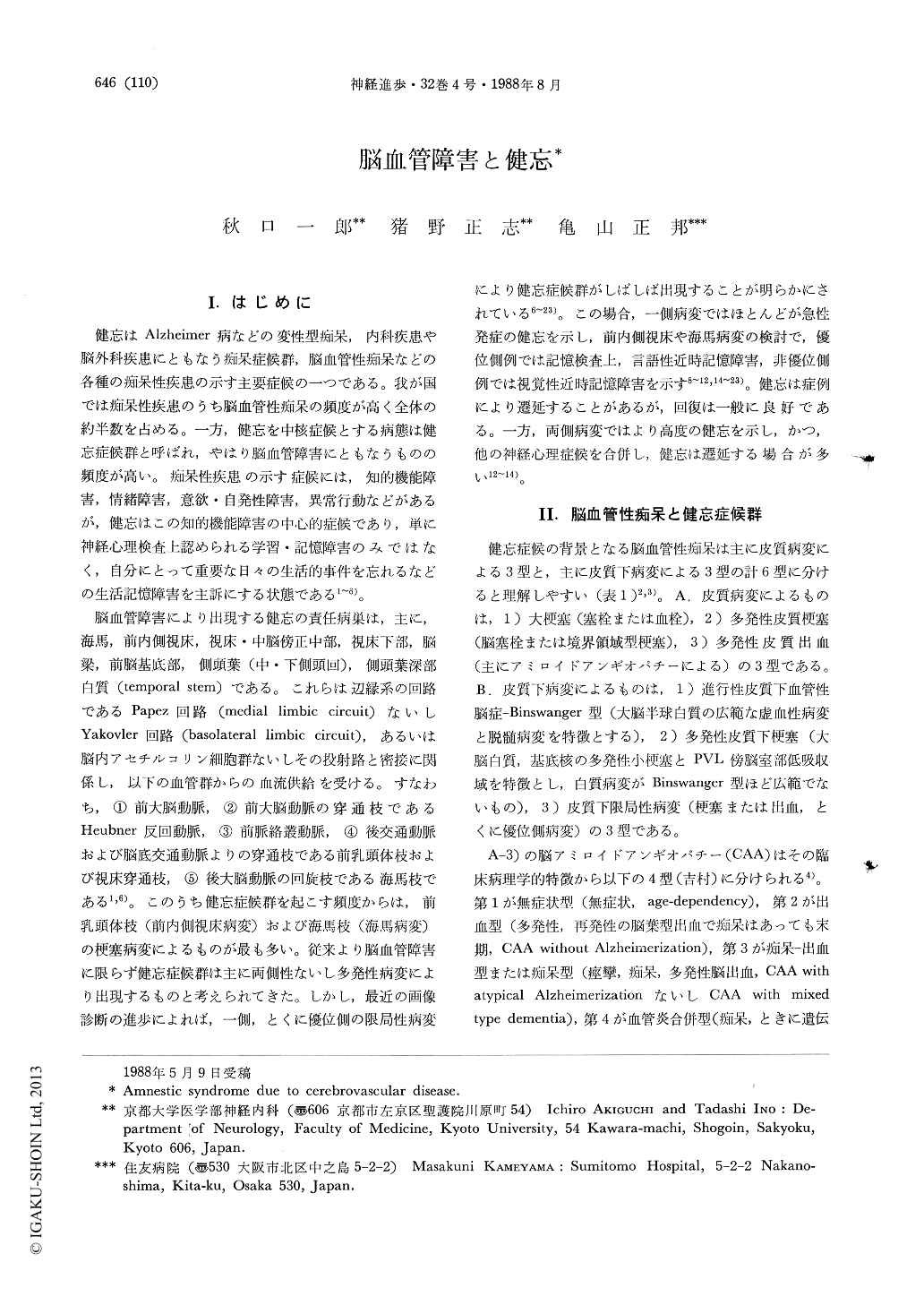Japanese
English
- 有料閲覧
- Abstract 文献概要
- 1ページ目 Look Inside
I.はじめに
健忘はAlzheimer病などの変性型痴呆,内科疾患や脳外科疾患にともなう痴呆症候群,脳血管性痴呆などの各種の痴呆性疾患の示す主要症候の一つである。我が国では痴呆性疾患のうち脳血管性痴呆の頻度が高く全体の約半数を占める。一方,健忘を中核症候とする病態は健忘症候群と呼ばれ,やはり脳血管障害にともなうものの頻度が高い。痴呆性疾患の示す症候には,知的機能障害,情緒障害,意欲・自発性障害,異常行動などがあるが,健忘はこの知的機能障害の中心的症候であり,単に神経心理検査上認められる学習・記憶障害のみではなく,自分にとって重要な日々の生活的事件を忘れるなどの生活記憶障害を主訴にする状態である1〜6)。
脳血管障害により出現する健忘の責任病巣は,主に,海馬,前内側視床,視床・中脳傍正中部,視床下部,脳梁,前脳基底部,側頭葉(中・下側頭回),側頭葉深部白質(temporal stem)である。これらは辺縁系の回路であるPapez回路(medial limbic circuit)ないしYakovler回路(basolateral limbic circuit),あるいは脳内アセチルコリン細胞群ないしその投射路と密接に関係し,以下の血管群からの血流供給を受ける。
Amnestic syndrome in patients with cerebro-vascular disease most likely results from lesions of the hippocampus, anteromedial portion of the thalamus, hypothalamus (including the mamillary body), prefrontal areas, and temporal lobe (in-cluding the temporal stem). These regions, which include the major portion of the limbic circuit of Papez (medial limbic circuit) and of the circuit of Yakovlev (basolateral limbic circuit), are nourished by the anterior cerebral artery,the anterior lenticulostriate artery (Heubner's recurrent artery), the anterior choroidal artery, the thalamopeduncular perforating arteries (pre-mamillary and thalamoperforating branches) and the posterior cerebral artery (hippocampal branch). Occlusion of the thalamopeduncular perforating arteries or of the posterior cerebral artery occa-sionally causes amnestic syndrome.

Copyright © 1988, Igaku-Shoin Ltd. All rights reserved.


